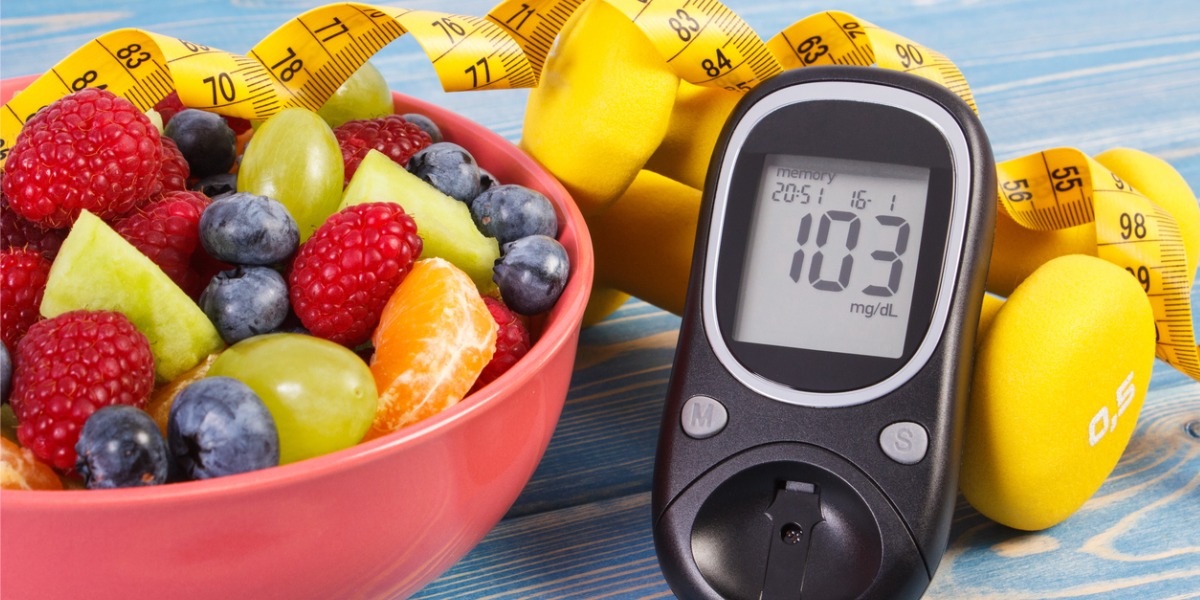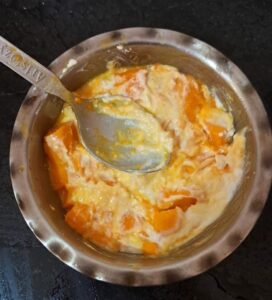Which fruits can diabetics eat? Is there a way to minimise sugar spikes when enjoying mangoes, chickoo and bananas? Deets inside.

Foods with a high Glycemic Index (GI) are absorbed quickly by the body and can cause rapid spikes in blood sugar levels (iStock).
As summer rolls in, the arrival of mangoes, often dubbed the ‘king of fruits’, sparks excitement. However, for those with diabetes, the question arises: is it safe to indulge in this sweet treat?
South First spoke to doctors and nutrition experts to understand which fruits can actually lead to a spike in blood sugar levels and how safe it is for individuals with diabetics, insulin resistance and prediabetes to consume them.
Fruit consumption has long been touted for its health benefits, including being rich in vitamins, minerals, and fiber.
Speaking to South First, Dr Mohan V, renowned diabetologist and Chairman of Dr Mohan’s Diabetes Specialities Centre in Chennai, addressed a common question among diabetics – whether it is safe to eat fruits like mangoes, chickoo, bananas etc.
Fruits are generally considered as a part of healthy diet as they are rich in vitamins, minerals and several phytonutritents like antioxidants etc, all of which may aid in post prandial blood glucose control, he said.
“A diet high in soluble fiber can slow the absorption of sugar and control blood sugar levels. Many fruits are high in fiber especially when eaten whole with the skin or pulp. The high fiber and water contents of many fruits promote safety and reduce subsequent food intake, thereby helping to maintain blood sugar levels,” Dr Mohan said.
Recently celebrity nutritionist Rujuta Diwekar who advocates for the consumption of local, seasonal fruits like mangoes, chickoo etc, even if one is a diabetic, put out a post on X suggesting the same.
This led to a huge uproar amongst several diabetologists, doctors and low carb practitioners.
“If you believe that fruits like chickoo, mango,banana are fattening, raise blood sugars, etc and Kiwi, berries are antioxidant, fibre rich, who’s to blame?…..” Diwekar said in her post on X.
“Syllabus for not representing local? markets that encourage imports? bias that can’t tell truth from a familiar lie?” she asked in her post.
If you believe that fruits like chickoo, mango, banana are fattening, raise blood sugars, etc & kiwi, berries are antioxidant, fibre rich, who’s to blame?
-syllabus for not representing local?
-markets that encourage imports?
-bias that can’t tell truth from a familiar lie? pic.twitter.com/RtWWNWFUd8— Rujuta Diwekar (@RujutaDiwekar) April 6, 2024
Severeal queries arose in response to this post. While some people expressed concerns and uncertainty about the information presented, many suggested that this might not be the best approach to addressing the issue.
Mandar Gadre, a metabolic health coach with handle FITholic_health said, “Such posts have a classic pattern: They mix nutrition science with other issues-pride in local foods…”
According to him, they tend to do so as the ones who posted them can turn it to anti-local-food when criticised.
“I am for all eating local, supporting our farmers and our own animal husbandry sector However, it is irresponsible to give confusion and often incorrect advice to countrymen reeling under metabolic disorders,” he said.
He criticised Rujuta Diwekar saying, “This dietitian is famous for such sleight of hand. She has chosen not to comment on how fruits can be damaging to someone with diabetes, fatty liver, etc and made it local-vs imported food issue! Buyer beware,” he said.
Doctors told South First that Mangoes are rich in vitamins A and C, fiber, and antioxidants, while bananas are a good source of vitamin B6, potassium, and also fiber. Chickoo is rich in dietary fiber, vitamins A and C, and contains a variety of antioxidants.
However, all these have a high calorie count due to its high natural sugar content, which can pose challenges for blood sugar management in diabetics, prediabetics and insulin resistant individuals and even those with other metabolic health issues.
These fruits have a high Glycemic Index (GI). Foods with a high GI are absorbed quickly by the body and can cause rapid spikes in blood sugar levels.
Mangoes have a medium to high GI, while bananas range from low to medium GI, depending on their ripeness.
Meanwhile, another popular handle @mindmusclepro by Devanand Prabhu and his wife Arpita Bhowmick, who are metabolic health coaches, reacting to the post said, “most of you would answer that fruits are healthy but it is not as straight forward as that,”
He explains that the healthiness factor of a fruit depends on many factors.
— Mind Muscle Project (@mindmusclepro) April 16, 2024
First of all, the healthiness of fruit depends on the type it is. Prabhu clarified that not all the fruits were the same, some were sweeter than the others.
He said that even the same fruit can have multiple varieties like the red and the green apple, and can come in with different properties. Explaining further Prabhu said all fruits contain two simple sugars: glucose and fructose (just like table sugar or honey).
Fruits with more fructose content are the sweeter ones. Busting a myth that fructose is harmless as it doesn’t register on HbA1C and doesn’t spike insulin, Prabhu said, “these kind of fruits are more harmful on the body especially the liver.”
Speaking about mangoes, pineapple, Banana etc., he said that these were the worst offenders when it came to spiking your blood sugar levels.
Consultant nutritionist Swetha Adarsh speaking to South First, also explained the impact of fruits on the blood glucose level. “Fruits have carbohydrates and one form of natural sugar called fructose— that increase blood glucose.”
She further explained that fructose stimulates only modest insulin secretion and does not require the presence of insulin to enter cells.
So when fructose-rich fruits are consumed it is converted rapidly into fructose-1 phosphate and bypass glucose metabolism.
She notes the example of Mango: “In 100 grams of Mango, 24.7 grams are carbohydrates, while 22.5 grams is fructose. Due to the high amounts of sugar in the fruit, blood glucose is increased.”
Swetha advises, “Anyone with renal issues, or other weight-related issues should try to avoid fructose-rich fruits, others can have, as they also are rich in vitamins and minerals.”
However, the nutritionist advises to have mango in moderation, as it is a seasonal fruit.
Explaining further about glycemic index of fruits, Dr Mohan said, “In general, fresh fruits have low to medium glycemic index values, except a few such as dried dates, watermelon, mango and pineapple that typically exhibit higher glycemic indexes because of their concentrated naturally occurring sugar content.”
The riper the fruit, the higher the GI due to increase in the concentration of naturally occurring sugar content.
Making it clearer, renowned metabolic health coach and practitioner of low carb diet, Shashikant Iyengar told South First, modern fruits are pesticide -laden, chemically ripened and hybridised to be high in sugars. We know that fruits like banana and mangoes among others are chemically ripened leading to health issues.
“While it is good for metabolically healthy individuals to have a serving of seasonal fruits, the blood sugar will rise for those with diabetes, prediabetes and insulin resistant individuals after having fruits, especially, the high-sugar ones like banana, mangoes, chickoo etc,” he said.
For those with diabetes, it’s better to stick to low-sugar fruits like fresh seasonal berries and kiwi in smaller quantity.”
Rujuta Diwekar is the Radhe ma of nutrition and Biswaroop Roy choudhary 2.0. Here’s why and it’s absolutely not funny anymore.
1. In a metabolically compromised nation of a 101mn Diabetic, 136 mn pre-Diabetic, Obese and now also the Cancer capital of the world- she consistently… https://t.co/FysiIXfH16
— Low Carb Healer (@TheIraSahay) April 15, 2024
Dr Mohan recommended citrus fruits such as orange, guava and berries and papaya that have low-sugar content for diabetics. He said that individuals with good control of diabetes can have defined portion of fruits such as citrus fruits, apples and pear.
“Fruits with high sugar content such as mangoes, banana, sapota and watermelon needs to be restricted,” he said.
Agreeing to this, Shashikant also said that for those with diabetes, it is better to stick to low sugar fruits.
Even half ripe guava or small quantity of around 100 grams of watermelon or papaya or musk melons, oranges are fine as they have comparatively lesser overall carbohydrates, he said.
“100gms of these fruits have around 10-12 gms of carbs and sugars. But this depends on individual carb tolerances. However, they are safe for those without diabetes,” he added.
He recommended these low-sugar fruits to be taken post high protein meals to lower the spike in blood sugar levels. Fruits like avocado, guava (semi ripe), blueberries, strawberries, kiwi etc. have minimal effect on blood sugar levels.
As it is season of mangoes and many find it difficult to avoid eating it, Shashikanth suggested diabetics to have a smaller serving of mangoes mixed with hung curd post meal to have a lower glycemic impact.
They can also have a small serving of mangoes mixed in cream post meal to minimise the rise in blood sugar.
Prabhu suggested eating fruits with yoghurt, whey and milk for the sugar spike to be minimal. He said that consuming fruits with sugary cereals is more harmful.

Shashikant Iyengar recommends eating mangoes with hung curd to keep the glucose spike low. (Supplied)
Metabolically healthy people can handle fruits much better than those who are metabolically compromised.
“For those with diabetes, PCOS or any such metabolic conditions, fruits are as dangerous as sugar. Being natural doesn’t make them better in this regard,” he added.
Meanwhile, experts said that fruit juices were a big no-no. According to them, fruits contain fibre, which helps to control the spike in blood sugar to some extent, preventing it from rising too quickly.
However, when fruits are made into juices and smoothies, all of this is lost, leaving nothing but sugar water.
“Commercially available fruit juices are worse. Dried fruits can be a villain in disguise, they are like sugar bombs,” said Prabhu.
Glycemic Index of common fruits
Guava – 29
Pear – 33
Apricots – 38
Papaya – 38
Strawberries – 40
Apple – 44
Orange – 45
Custard apple – 54
Dates, dried – 54
Grapes – 54
Banana – 56
Mango – 56
Watermelon – 65
Pineapple – 82
Reference: Atkinson FS, Brand-Miller JC, Foster-Powell K, Buyken AE, Goletzke J. International tables of glycemic index and glycemic load values 2021
(Edited by Shauqueen Mizaj)

Jul 26, 2024

Jul 26, 2024

Jul 26, 2024

Jul 26, 2024

Jul 26, 2024

Jul 26, 2024